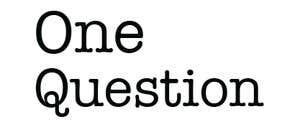Who would disagree with Dickens that London’s green spaces are the city’s “lungs?” A city is an animal that sleeps, although some never do, like New York City or Hong Kong. All cities are creatures of a sort. Some have multiple “faces” they present to the world, most have a “beating heart” where the action unfolds, and it is a rare city that lacks a dark “underbelly.”
The analogy of city as living organism is so established, in fact, that it has crossed over into the realm of scientific inquiry. For at least a decade, researchers have been attempting to decode what lessons for sustainable planning could emerge from thinking of cities as living breathing beings.
Now a team of scientists from the Ecole Polytechnique Federale de Lausanne (EPFL) has found that all cities—whether Tokyo, Lagos, or Zurich—operate according to predictable principles that govern animal biology in the natural world. In the process, they challenged a longstanding assumption: that bigger cities are more sustainable than small ones.
“Bigger cities are often considered ‘better,’” says Gabriele Manoli, a study author and head of EPFL’s Laboratory of Urban and Environmental Systems, in an email. “Yet, these laws depend on the definition of a city.” The findings, reported in the Proceedings of the National Academy of Sciences, could influence how urban planners design the cities of the future.
Cities self-organize as they grow regardless of context and without central planning.
Planners have long postulated that bigger is better because large urban areas require fewer resources and energy per capita and generate more wealth. But this was difficult to model because of the ad-hoc way city boundaries are often drawn. Where does the true edge of a city lie? To resolve this problem, Manoli and his colleagues “re-scaled” 100 cities around the globe, breaking them down into units they called pixels that could be more equitably compared across variously sized urban areas.
Then they crunched millions of data points from these different city units and found a scaling law that connects population size to transport networks and economic activity and CO2 emissions. The relationship between these variables follows the same curve for all cities, large and small, they found, and echoes Kleiber’s Law, a principle that emerges in biology when the sizes of animals are viewed in relation to their metabolic rates.
In the 1930s, Max Kleiber found that the energy that animals required daily to sustain their bodies (their metabolic rate) scaled in proportion to their size. Mice have a lower metabolic rate than elephants, and tiny microscopic creatures require less energy still. The law has proven a useful tool.
Veterinarians use Kleiber’s Law to determine how much medicine to give an animal, while conservation scientists use it to assess the needs of different species. By simply knowing an animal’s size, they can deduce its metabolic rate, and figure out how much food and water it requires to survive. This helps in managing ecosystems and wildlife reserves to ensure a habitat can support a specific animal population.
For cities, population size is akin to an animal’s mass, economic activity to the animal’s metabolic rate and roads to its circulatory system, the researchers propose. The relationship is universal and independent of geographical, political, and historical differences, they say: Cities self-organize as they grow, naturally optimizing for energy flow and resource distribution, regardless of context and without central planning.
The authors of the study hope that for cities, the relationship revealed in the study may help urban planners with sustainable design. “Thanks to the vast amount of data available, cities offer a fertile ground to test new theories inspired by biology and ecology,” says Manoli.
Perhaps the new math will give planners a better handle on how to keep the beasts that are our cities humming as they grow and evolve. ![]()
Lead image: Alicia Crespo Montañes, EPFL URBES
































